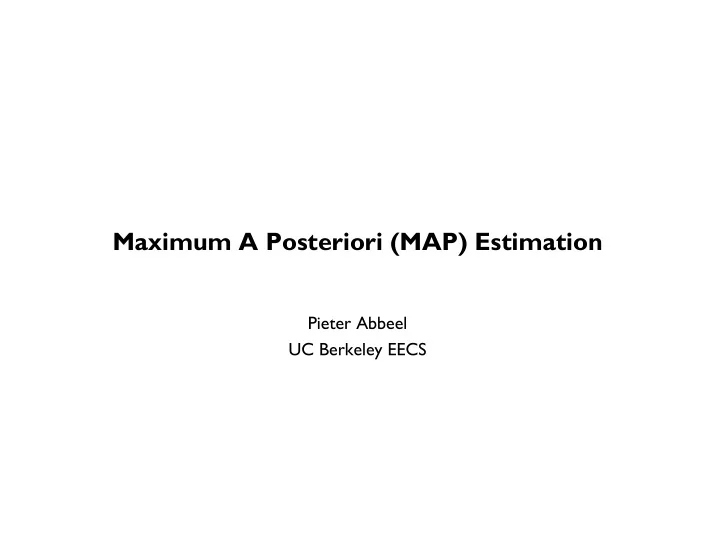

Maximum A Posteriori (MAP) Estimation Pieter Abbeel UC Berkeley EECS
Overview X 0 X t-1 X t n Filtering: z 0 z t-1 z t n Smoothing: X 0 X t-1 X t X t+1 X T z 0 z t-1 z t z t+1 z T n MAP: X 0 X t-1 X t X t+1 X T z 0 z t-1 z t z t+1 z T
MAP Naively solving by enumerating all possible combinations of x_0,…,x_T is exponential in T ! n Generally:
MAP --- Complete Algorithm n O(T n 2 )
Kalman Filter (aka Linear Gaussian) setting Summations à integrals n But: can’t enumerate over all instantiations n However, we can still find solution efficiently: n n the joint conditional P( x 0:T | z 0:T ) is a multivariate Gaussian n for a multivariate Gaussian the most likely instantiation equals the mean à we just need to find the mean of P( x 0:T | z 0:T ) n the marginal conditionals P( x t | z 0:T ) are Gaussians with mean equal to the mean of x t under the joint conditional, so it suffices to find all marginal conditionals n We already know how to do so: marginal conditionals can be computed by running the Kalman smoother. Alternatively: solve convex optimization problem n
Recommend
More recommend